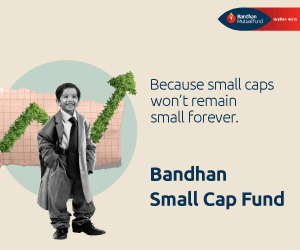The long duration funds could potentially act as an energy booster while accrual funds would tend to offer a stable bias
BFSI Industry Interview

Ms. Lakshmi Iyer is Chief Investment Officer (Debt) & Head Products of Kotak Mahindra Asset Management Company (KMAMC)
Lakshmi heads fixed income and products team at KMAMC. She has been with the organisation since 1999.
Lakshmi joined KMAMC as a fund manager, and was responsible for credit research as well as deal execution, managing fund performance across all debt funds and assisting sales in client interaction.She has also been a portfolio specialist, and managedproduct related initiatives, product pricing and coordination with the funds management and sales team in that role.
Prior to Kotak, Lakshmi worked with Credence Analytics Pvt Ltd, as a research analyst where she was tracking corporate bond markets in India and generating research reports. She wasalso instrumental for conceiving various financial software tools in collaboration with software and technical teams.
With reduction in small savings interest rates beginning this fiscal year, many investors, especially senior citizens, who rely on FD interest for their incomes are worried. What is your advice for investors who rely on fixed income investment for their income?
The key thing here would be to impose an asset allocationstrategyinto fixed income securities that preferably allocates a major part of money in tax-free bonds with a long horizon. A portion of investment is also advised in well managed accrual and duration funds. Just like food seasonings, one could nibble into a large cap oriented equity mutual fund, which could act as a condiment to ones fixed income oriented portfolio.
CPI surged to 5.76% in May, mainly on account of food price inflation. What in your view are the factors underlying the (more or less) persistently high food price inflation in our country? Do you see food price inflation moderating in the coming months with, hopefully, good monsoon?
Low productivity in the farm sector, is plaguing the food supply in India. This is further compounded by major losses during the distribution stage due to insufficient storage capabilities.
Food inflation in the country may also be on account of the information asymmetry and the structural bottlenecks that exist between the food producer and the retail market price.
Having said that, structural bottlenecks are being addressed and markets are being integrated. Farm productivity is also likely to increase,withthe good monsoon up until now,improving the water supply prospects. For these reasons, we see food inflation coming down in the times to come.
Crude prices have re-bounded from the January – February lows. Are there significant near term risks of crude prices affecting inflation and fiscal deficit in India?
The bulls in crude oil are taking a beating in the international market as the supply glut remains. For that reason, the risk of crude prices threatening to escalate into inflationary pressure or expand the fiscal deficit is still low. Previous two months have been a case in point, where we have a seen a sharp correction in crude prices
What is the implication of Brexit on the Indian economy, both in terms of exports and our currency, in near term and the medium term? Once the slightly longer term implications of Brexit plays out, do you expect it to cause a chain reaction of non USD currency devaluations?
The issue is complex and would require a detailed analysis of outcomes before anything substantial can be said. Having said that, it is certain that British trade and commerce would be affected and so would be their growth prospects. This should see volatility in their currency valuations. Calendar YTD, the UK pound has been one of the worst performers among other currencies. As we see it, already means and measures are being sought by UK to mitigate the impact of Brexit. A major impact of Brexit may be the chain reaction that it may set offin other countries. Indian companies dependent on exports to UK might see pressure on their margins. But frankly the jury is yet to be out on the full impact.
The US Federal Reserve did not raise interest rates in their last monetary policy announcement. With Brexit behind us, when do you expect the Fed to increase interest rates?
The growth in the US economy is still on timid ground, and in an election year, the policy makers might not want to rock the boat. The Fed fund futures are now pricing in around 25% probability of a fed rate hike in September, which December futures are pricing in around 50% probability. Hence, we do not expect very aggressive tightening from the US at this juncture – at best a 25bps hike till the end of CY 2016. With global economic circumstances also unfavourable, we believe that US Fed might be circumspect before it approaches for another rate hike.
Do you see the Reserve Bank making more rate cuts this fiscal year? If yes, what is the quantum of cuts that you expect this year?
Our internal estimates suggest that RBI has a head room for additional 25 bps rate cut this fiscal as a base case scenario. While global cues are supportive, key would be developments on the macro front here on home ground. Initial signs on monsoons suggest no major disruptions on inflation front. If that were to materialise, we could see another 25 bps rate cut, which could take the repo rate to 6% over next 12 months
Optics aside, do you expect the exit of the current RBI Governor to posing risks to the monetary policy challenges in India? What are the major monetary policy issues that the new RBI Governor will have to deal with?
The current RBI governor has done a remarkable job in terms of anchoring inflation expectations as also conduct of monetary policy process. However, the institution of RBI is larger than any individual persona per se. Will the RBI and its institutional processes ensure credibility, continuity and stability – would be the key watch out factors for the market.We expect these to broadly remain intact in the new governor’s regime as well.
The new Governor would be expected to manage the nearly US$ 22bn FCNR redemptions withleast volatility in the forex or money markets. Another challenge would be to continue with the PSU bank balance-sheet clean-ups and ensure their recapitalisation without further fiscal stress.
What is your outlook on bond yields over the next 12 to 24 months?
The CPI inflation is likely to be on a downward course over the next 12-18 months. Thus, we believe that the yields could structurally be on a downward trajectory.This may createan additional room for 25-50 bps rate cut within the given time frame, bringing the yield curve down even further. We expect 10 yrgsec yield to test the 7% levels over the next 6-12months
Long term gilt fund investors, including investors in your gilt fund,Kotak Gilt Funds, have got around double digit returns in the last one year. Given your interest rate outlook, will you advise gilt fund investors to remain invested in these schemes over the next 2 to 3 years?
We believe that as the duration performance reaches its peak, the attractiveness of short duration accrual fund increases. From the current stand point duration funds still have some steam left, but as the 10 year approaches the 6.75%-7% mark, the attractiveness of the accrual fund may get more entrenched. For existing investors, we recommend them to hold on to duration investments, notwithstanding near term volatilities. For incremental investments, we have been suggesting overweighting short duration/accrual strategies to the tune of around 75% (in a 100 rupee fresh allocation) and the residual in long duration funds. Long duration funds could potentially act as an energy booster, while short/accrual funds would tend to offer a stable bias on the portfolio.
What kind of debt funds would you advise for investors looking for good returns, at this point of time?
The answer to that depends on the investment profile, the investment horizon and the risk appetite of the investor.Post this rally, accrual funds like KotakIncome Opportunities continue to have higher gross portfolioyields in comparison with most other fixed income offerings we have. The spread between the AAA and non AAA corporate bond still looks quite high and such funds could explore investment opportunities in this space. Hence, on an incremental allocation of say Rs. 100 into fixed income, we would recommend, Rs. 75-80 in short duration/ accrual based strategies and the remainder of Rs. 20-25 into long duration strategies like gilt and bond
Recent Interviews
-
In conversation with Mr Vaibhav Shah Head Products: Business Strategy & International Business Mirae Asset Mutual Fund India
Apr 18, 2025
-
In conversation with Mr Kaustubh Sule Senior Fund Manager Fixed Income with Groww Mutual Fund
Apr 18, 2025
-
In conversation with Mr Abhishek Tiwari Chief Business Officer of PGIM India Mutual Fund
Apr 5, 2025
-
In Conversation with Mr Akhil Chaturvedi Executive Director & Chief Business Officer with Motilal Oswal Mutual Fund
Mar 26, 2025
-
In conversation with Mr Rohit Seksaria Fund Manager Equity with Sundaram Mutual Fund
Mar 7, 2025
Fund News
-
Axis Mutual Fund joins ONDC Network to Expand Access to Mutual Fund Investments
Apr 18, 2025 by Axis Mutual Fund
-
Nippon India Mutual Fund launches Nippon India Nifty 500 Quality 50 Index Fund
Apr 18, 2025 by Advisorkhoj Team
-
Nippon India Mutual Fund launches Nippon India Nifty 500 Low Volatility 50 Index Fund
Apr 18, 2025 by Advisorkhoj Team
-
RBI Monetary Policy: RBI changes policy stance and lowers rate
Apr 9, 2025 by Axis Mutual Fund
-
Kotak Mahindra Mutual Fund launches Kotak Nifty Top 10 Equal Weight Index Fund
Apr 7, 2025 by Advisorkhoj Team




